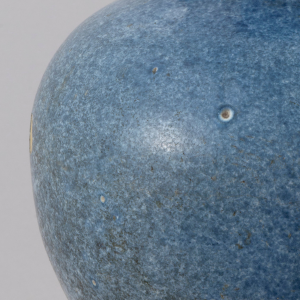Apothecary Pot
Author: Unknown
Origin: Rato Factory, Lisbon (?)
Dating: 18th century
Material: Clay
Dimensions (cm): 26,4 x Ø 24,7
Inv. no.: PD0257
From the 17th century onward, faience pieces were being used in Apothecaries with drawings on the outside to indicate what was inside. However, this was a restrictive practice from the practical point of view of managing the products in an Apothecary associated with the progress of Medicine in the 18th century. This led to the removal of certain materials that had proved to be dangerous. This practice promoted the manufacture of pieces with descriptive drawings that were, suddenly, empty. Instead, pieces of paper were glued to the object to facilitate the identification of the contents. Numbers were also used to allow a concerted management between the product and its listing that was changed according to the Pharmaceutical management in the Apothecary.
It is believed that this object was made in the Rato Factory. A Royal Factory was established in 1767 to produce earthenware. Due to the location of its settlement in Lisbon it became known as Rato Factory.
Its concept was based on a Marquis of Pombal’s protectionist campaign and, in a first phase, the Factory produced luxurious models, some of which for the Marquis himself.
In a second phase the lavish production was upheld and the blue and white motifs prevailed.
The Rato Factory remained successful up to 1818 when successive ill management led to its closure in 1835.



